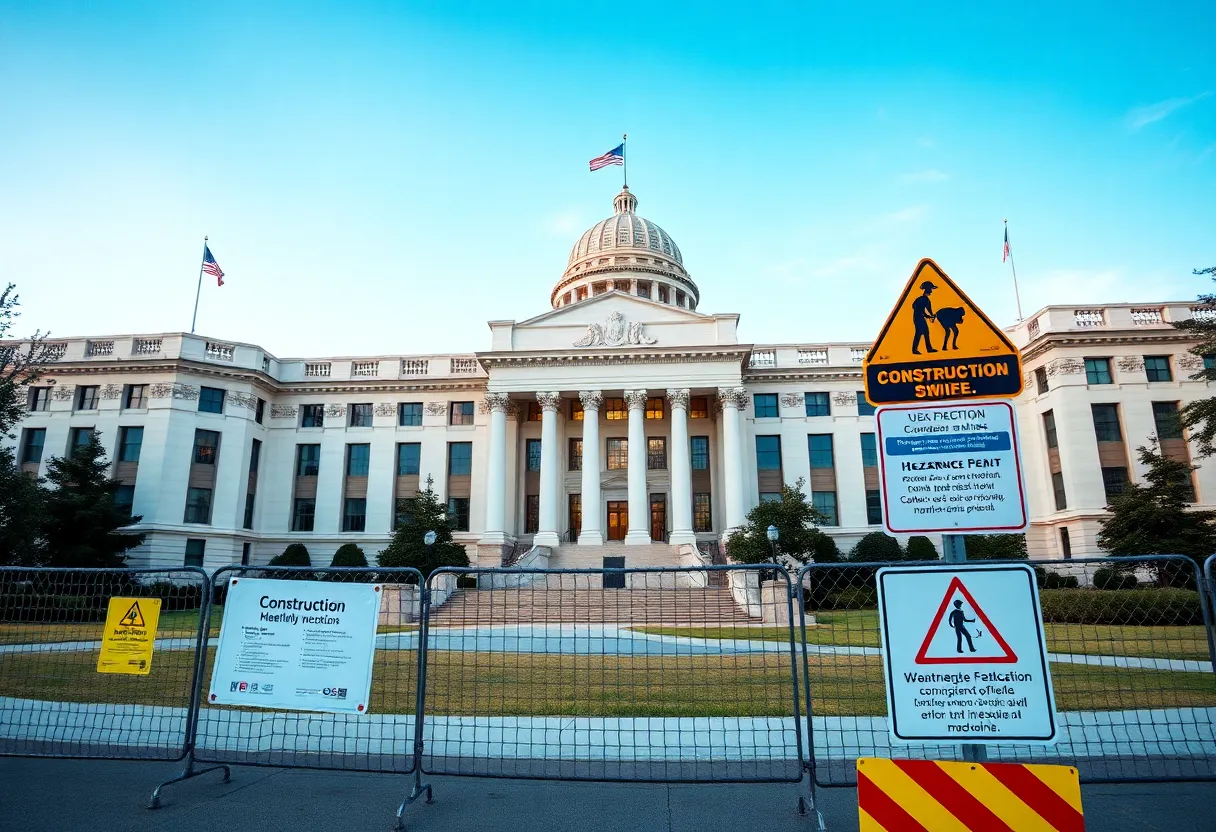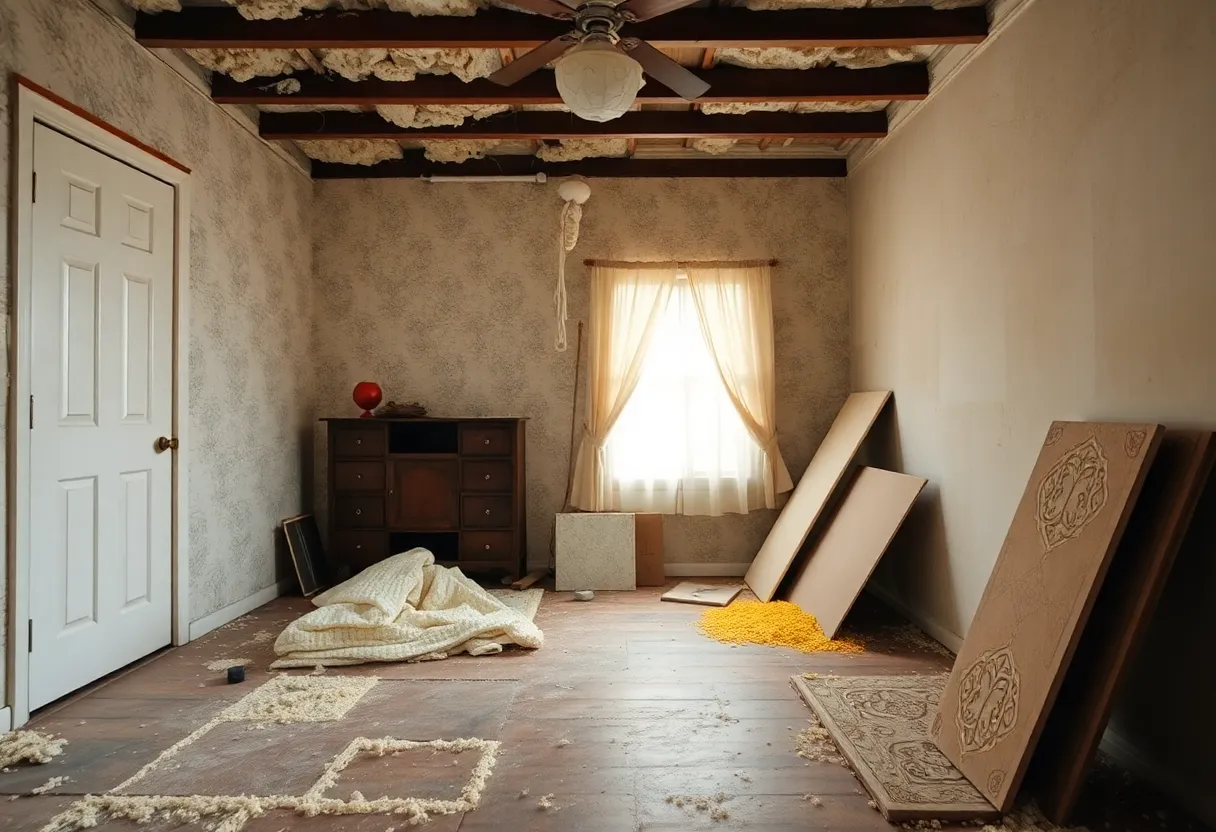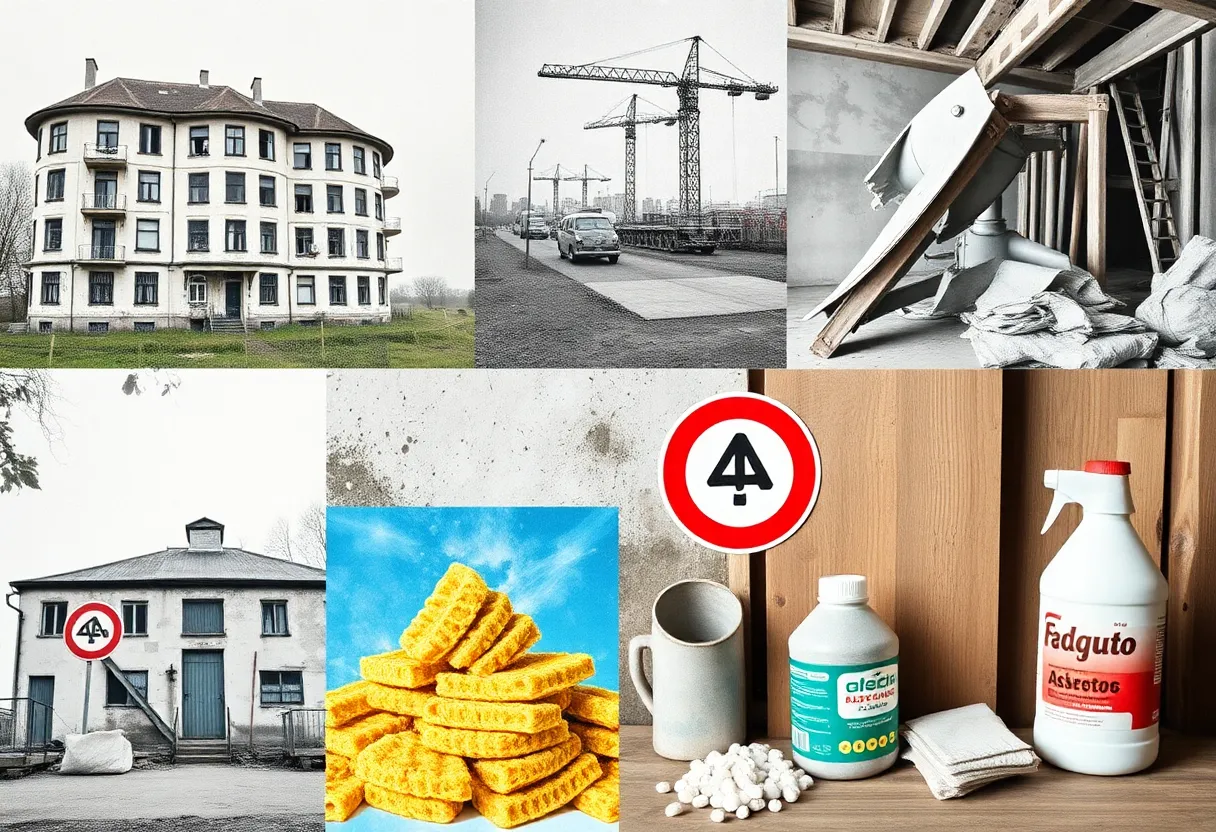News Summary
Recent findings of asbestos at the Emmett J. Bean Federal Building in Indianapolis have sparked health and safety discussions among staff. Despite asbestos-containing materials being encapsulated and not posing an immediate risk, the U.S. General Services Administration confirmed their presence and assured no current remediation is necessary. As public awareness surrounding asbestos hazards grows, stories of affected individuals highlight the ongoing implications of exposure. Cleanup efforts at a contaminated site in Terre Haute are also progressing, with the EPA leading the initiative to eliminate hazardous materials.
Asbestos Discovery Stirs Concerns at Emmett J. Bean Federal Building
Recent revelations concerning the presence of asbestos at the Major General Emmett J. Bean Federal Building in Indianapolis have ignited discussions about safety and health protocols among staff members. Spanning an impressive 1.6 million square feet on the Fort Benjamin Harrison campus, this facility serves a crucial function, housing the Defense Finance and Accounting Service (DFAS), which is responsible for processing debts and claims for the Department of Defense.
In an email sent to employees on July 11, the site director attempted to directly address the concerns sparked by the discovery. The email highlighted that the asbestos-containing materials within the building are fully encapsulated, effectively ensuring they are not exposed and do not pose any immediate risk. This encapsulation means that the materials are completely covered and isolated from environmental factors that could release harmful fibers into the air.
Asbestos, classified by the Centers for Disease Control (CDC) as a dangerous substance, becomes hazardous primarily when disturbed — through activities like sanding or grinding — that might make it airborne. However, employees have been reassured that the current conditions mean there is no immediate threat to health and safety related to these findings.
GSA’s Role in Managing Asbestos Concerns
In light of these developments, queries directed to DFAS were referred to the U.S. General Services Administration (GSA), which oversees the Bean Center. The GSA acknowledged the presence of asbestos-containing materials (ACM) in certain locations but insisted that there is no current need for remediation. To maintain transparency, the GSA has also committed to informing building tenants and contractors regarding the status of ACM on an annual basis.
Importantly, there have been no reported incidents or citations concerning asbestos exposure in the building, a fact that has provided some degree of reassurance to the staff. Whenever remediation is necessary, the GSA adheres to all local, state, and federal regulations, employing licensed contractors specifically trained to handle such hazardous materials.
Currently, there are questions surrounding how and when the asbestos was initially discovered. While the GSA has not provided details regarding the timeline or specifics of the discovery, the U.S. Department of Labor has confirmed that no inspections regarding the asbestos complaint have been conducted. Meanwhile, the local chapter of the American Federation of Government Employees (AFGE) has taken an interest in the situation, prompting an investigation.
Michael Mihalik and the Dangers of Asbestos
As the conversation surrounding asbestos continues, personal stories such as that of Michael Mihalik, a Kewanna, Indiana resident, bring a human face to the dangers of this material. Mihalik, who developed asbestosis—a potentially debilitating lung disease caused by asbestos exposure—has faced significant health challenges over the years. Once exposed to asbestos while working in steel plants and lumber yards in the 1970s and 1980s, Mihalik’s deteriorating health culminated in a double lung transplant in December 2024 after he was misdiagnosed with various respiratory conditions for years.
Mihalik has since become an advocate for raising awareness about asbestosis and the wider implications of asbestos exposure, especially in light of ongoing discussions concerning regulations surrounding chrysotile asbestos. While chrysotile is often viewed as less toxic compared to other forms, its dangers cannot be overlooked—prompting renewed calls from health professionals for stringent public safety measures. Moreover, impending decisions from the Environmental Protection Agency (EPA) regarding the potential banning of chrysotile asbestos could significantly impact future regulations and health guidelines.
Progress on Asbestos Cleanup in Terre Haute
In a positive development, cleanup efforts aimed at eliminating hazardous asbestos from the brownfield site at 19th and Beech St. in Terre Haute are progressing well. The EPA has been proactive in removing asbestos-contaminated materials for over seventy working days, with more than 9000 tons of contaminated material being extracted from the site. Significantly, this cleanup effort is entirely funded by the EPA, sparing the city from incurring any costs.
With the cleanup expected to be completed by summer, the city aims to repurpose the site for redevelopment, focusing on providing quality housing opportunities that meet market demand in the neighborhood.
As public awareness of asbestos hazards continues to rise, the interconnected stories of federal building staff safety, individual health struggles, and extensive cleanup efforts present a complex landscape of challenges and opportunities in addressing the ongoing ramifications of asbestos exposure.
Deeper Dive: News & Info About This Topic
HERE Resources
Vanderbilt Mining Held Liable for Asbestos Exposure
Asbestos Discovered at Vanderbilt University: Key Updates
Homeowner Battles Asbestos Hazard After Costly Cleanup
Asbestos Exposure Risks in Mining: A Danger That Lingers
Inquests Opened into Asbestos Exposure Cases in Suffolk
Families Unite in Appeal for Justice in Asbestos-Related Deaths
Whistleblower Secures Over £500,000 in Asbestos Case
Williamsport High School Goes Fully Virtual Due to Asbestos
AstraZeneca Progresses in Mesothelioma Treatment Trials
Frankford High School Reopens After Asbestos Closure



















